Affiliate links on Android Authority may earn us a commission. Learn more.
Samsung Galaxy S23 Ultra revisited: The good and the bad six months later
Published onAugust 19, 2023
Samsung’s Galaxy S23 Ultra landed early in 2023 with all of the hype of a headliner at Coachella or Lollapalooza — and we rewarded it with a rock & roll comparison that stretched on just as long as either of the festivals mentioned above. While we won’t be revisiting the Springsteen-centric theme from our original Galaxy S23 Ultra review, it’s time to see how some of Samsung’s finer points have stood the test of time. After all, the Galaxy S23 Ultra now faces a different class of competitors than it did in February. Let’s see if the “Boss of Android” (last reference, I promise) is still on top in our Samsung Galaxy S23 Ultra revisit.
While I haven’t had my SIM embedded in the Galaxy S23 Ultra over the entirety of the last six months (I’ve had to test a lot of devices!), it’s a phone that’s never dipped too far out of my rotation. I still prefer a smaller device and, if I’m lucky, one that flips open and closed, but I’ve come to appreciate what Samsung’s beast of a flagship has to offer. With some summer plans on the horizon, I swapped my SIM from the Galaxy Z Flip 5 back to the Galaxy S23 Ultra and got reacquainted with the S Pen.
What’s still good about the Samsung Galaxy S23 Ultra
Samsung’s powerful flagship stuck the landing during our initial review period, securing a five-star rating and our elite Editor’s Choice award. The cameras, build quality, and overall performance stood out, but it was fair to wonder how the Galaxy S23 Ultra would stand the test of time when it beat so many competitors to the market. We can safely say it’s aged like a fine wine. The Galaxy S23 Ultra is a top pick in many of our best lists — including the best Android phone list — and Samsung’s flagship has only improved over time thanks to frequent software updates.
Cameras

Samsung’s Galaxy S23 Ultra quickly climbed the ranks of the best camera phones, but that shouldn’t come as a surprise. Its predecessor held down the top spot for a long time, and the mirrored quad-camera setup on the S23 Ultra may be familiar, but it’s still one of the most flexible you can buy. However, Samsung’s camera strength isn’t just a case of copy and paste — at least not entirely.
Although three of the Galaxy S23 Ultra’s four cameras are the same as they were on the Galaxy S22 Ultra, the upgraded fourth sensor is the star of the show. Samsung swapped its tried and true 108MP primary camera for a new 200MP, shifting to smaller pixels but picking up much better binning potential to boost your low-light snaps. Outside of the whopper of a new sensor, the Galaxy S23 Ultra packs two 10MP telephoto lenses and a 12MP ultrawide snapper, all of which help it to hang onto one of the best zoom packages on a smartphone. Samsung’s other swap lies in the selfie camera, which is no longer a 40MP punch hole but a 12MP one with much larger pixels.
Samsung's quad-camera setup still sets the standard for smartphone zoom.
We have plenty of in-depth comparisons between the Galaxy S23 Ultra and its closest rivals, so I’m just going to highlight a few of my favorite shots. I captured the image of the toad to the left while camping with my family, and I didn’t have to use Night mode to do so. The green hues might be a bit saturated, but the detail on the toad is excellent, and the pink of its tongue is spot on.
My middle two shots are stereotypical travel photos, trying to capture life above the clouds and tall trees at night. Both show colors and details how I remember them, with a few trees picking up a red-orange glow from the campfire below. I’m particularly pleased with the image of a boulder (or maybe bigger than a boulder) taken while I was in Boulder. The finer details up the rock face are excellent, and it separates nicely from the trees in the background.
Oh, and I’ll remind you just how good the Galaxy S23 Ultra’s zoom capabilities are. In my original review, I included shots of stone letters on the side of a bank, but getting up close and personal with a hot-air balloon pilot is a much better use case. While I probably wouldn’t share the 30x or 100x images below on social media, it’s incredible to just about make out the logo on the pilot’s hat and clearly see the passenger in the back of the basket. The details aren’t perfect, but Samsung deserves plenty of credit for the image it did capture, considering I wasn’t stabilizing the Galaxy S23 Ultra at all.
Build quality and display
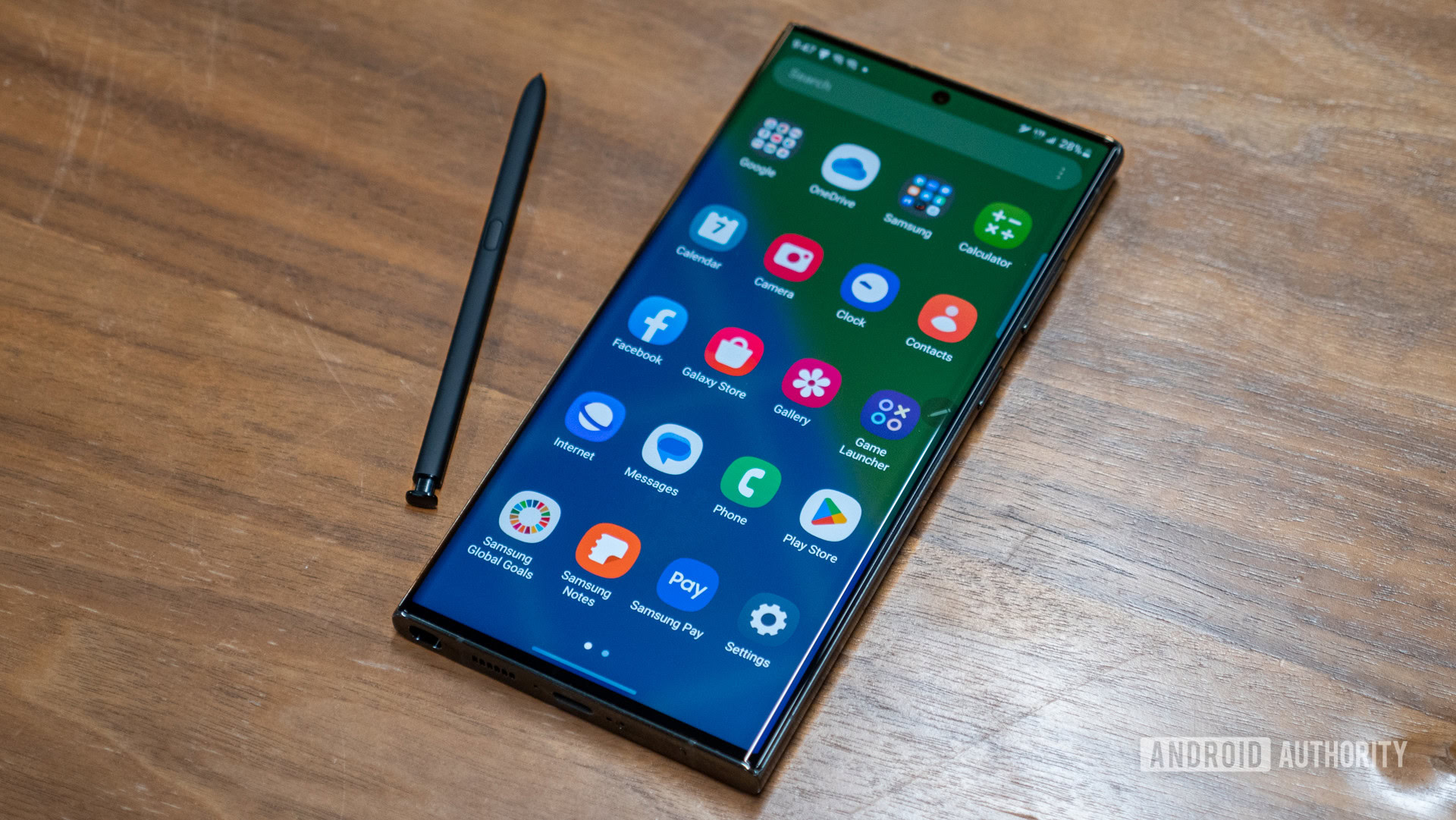
When spending upwards of $1,200 on a smartphone, it’s fair to expect top-notch materials to accompany your excellent camera system. Samsung knows this and has decked out its Galaxy S23 Ultra accordingly. No matter how you feel about the simple, slab-like design, you can’t deny that Gorilla Glass Victus 2 and Armor Aluminum are a winning combination.
The Galaxy S23 Ultra’s combination of high-end materials isn’t just for show, either. Its IP68 rating offers plenty of reassurance against both water and dust, and our review unit has put up with its fair share of abuse over the last six months. It took a tumble before ever making its way into my hands, but the tiny nicks at the top of the frame are almost unnoticeable and have no effect on day-to-day usage.
The Galaxy S23 Ultra's Gorilla Glass Victus 2 and Armor Aluminum construction has aged perfectly.
Samsung’s color options for the Galaxy S23 Ultra are a little more “grown-up” this year — unless you go for one of the Samsung Store-exclusive versions — but we’re still fans of the satin Phantom finish. This generation’s dark green edition is the perfect mix of color without being too loud, and I haven’t gotten tired of the look nearly half a year later.
Then, there’s the display. Samsung’s sweeping 6.8-inch panel is the cherry on top of the Galaxy S23 Ultra’s premium setup, offering an adaptive 120Hz refresh rate, 1,750 nits of peak brightness, and a sharp Quad HD resolution. Of course, the Galaxy S22 Ultra had all those same specs, but the Galaxy S23 Ultra swaps to a panel of Gorilla Glass Victus 2 from Gorilla Glass Victus Plus for a little extra toughness.
Battery life and charging
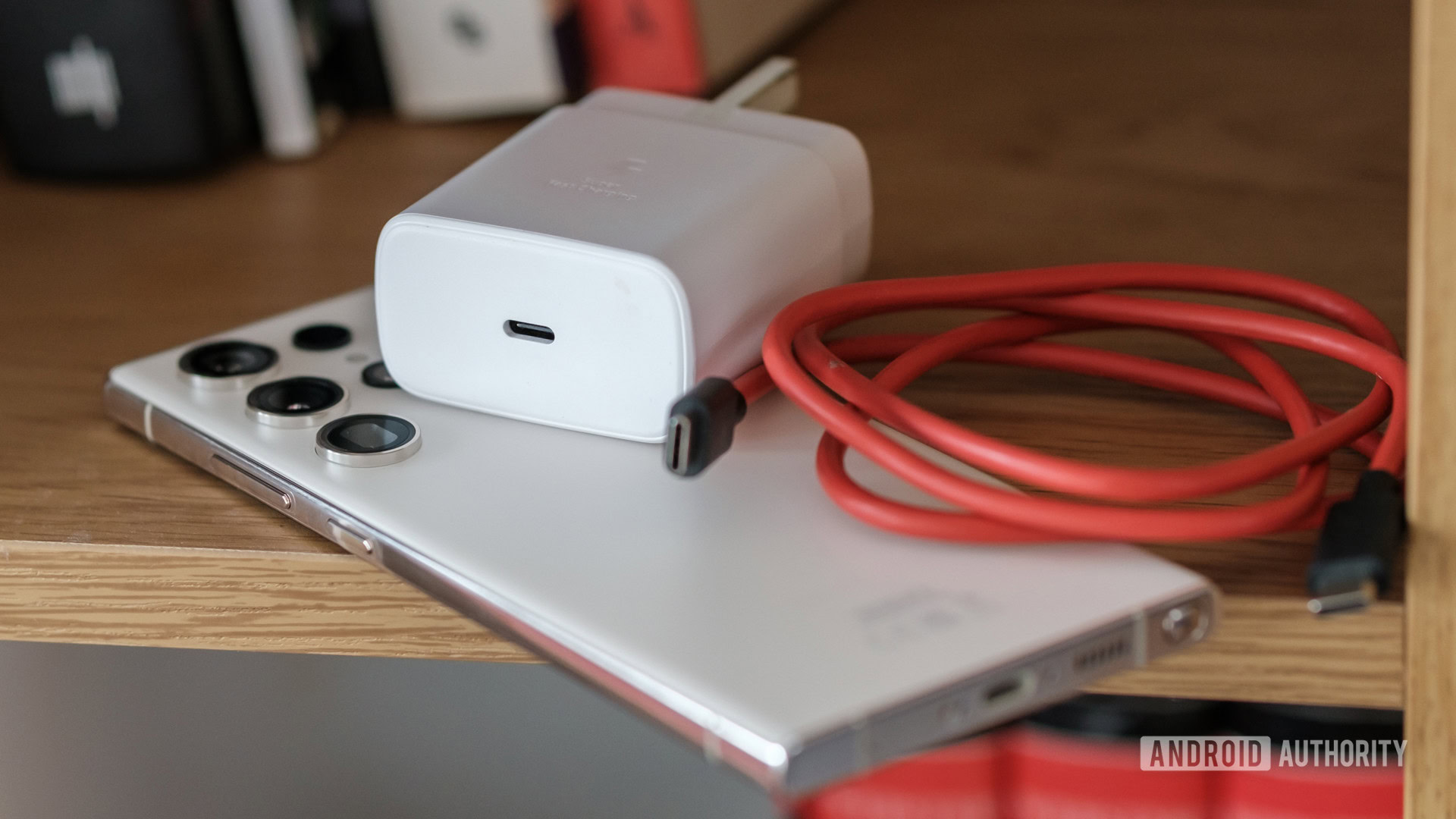
It’s no secret that the Galaxy S22 Ultra was a bit of a battery bore. The thermal-hogging Snapdragon 8 Gen 1 chipset chewed through the 5,000mAh cell in a hurry, forcing us to charge up just a bit more than we’d like. Thankfully, that chipset is no longer in the driver’s seat, with Qualcomm’s much more efficient Snapdragon 8 Gen 2 for Galaxy in its place.
While we’ll come back to the performance of Qualcomm’s latest chipset in a minute, the most important one might be that battery life is no longer a cause for concern. The Samsung Galaxy S23 Ultra no longer heats up like an egg on a hot Arizona day after a few minutes of use, so the battery no longer drops like a stone when put under pressure. Whereas the Galaxy S22 Ultra was lucky to eclipse a day and a half of usage, it’s much easier to push the Galaxy S23 Ultra nearly two full days. My usage is the definition of mixed — comprising social media, light gaming, plenty of music streaming, and navigation — and I’ve had no issues with longevity outside of one four-hour drive that relied heavily on GPS.
When I do finally drain the 5,000mAh battery, Samsung’s 45W wired charging hops right back into the driver’s seat. It’s still the fastest way to get the Galaxy S23 Ultra back up and running, as long as you have a compatible USB PD PPS charger. It took about 75 or 80 minutes to pick up a full charge during my time with the phone — right on par with the previous generation. Samsung also stuck with 15W wireless and 4.5W reverse wireless charging, both of which are nice to have but take significantly longer to get you back on your feet.
Performance
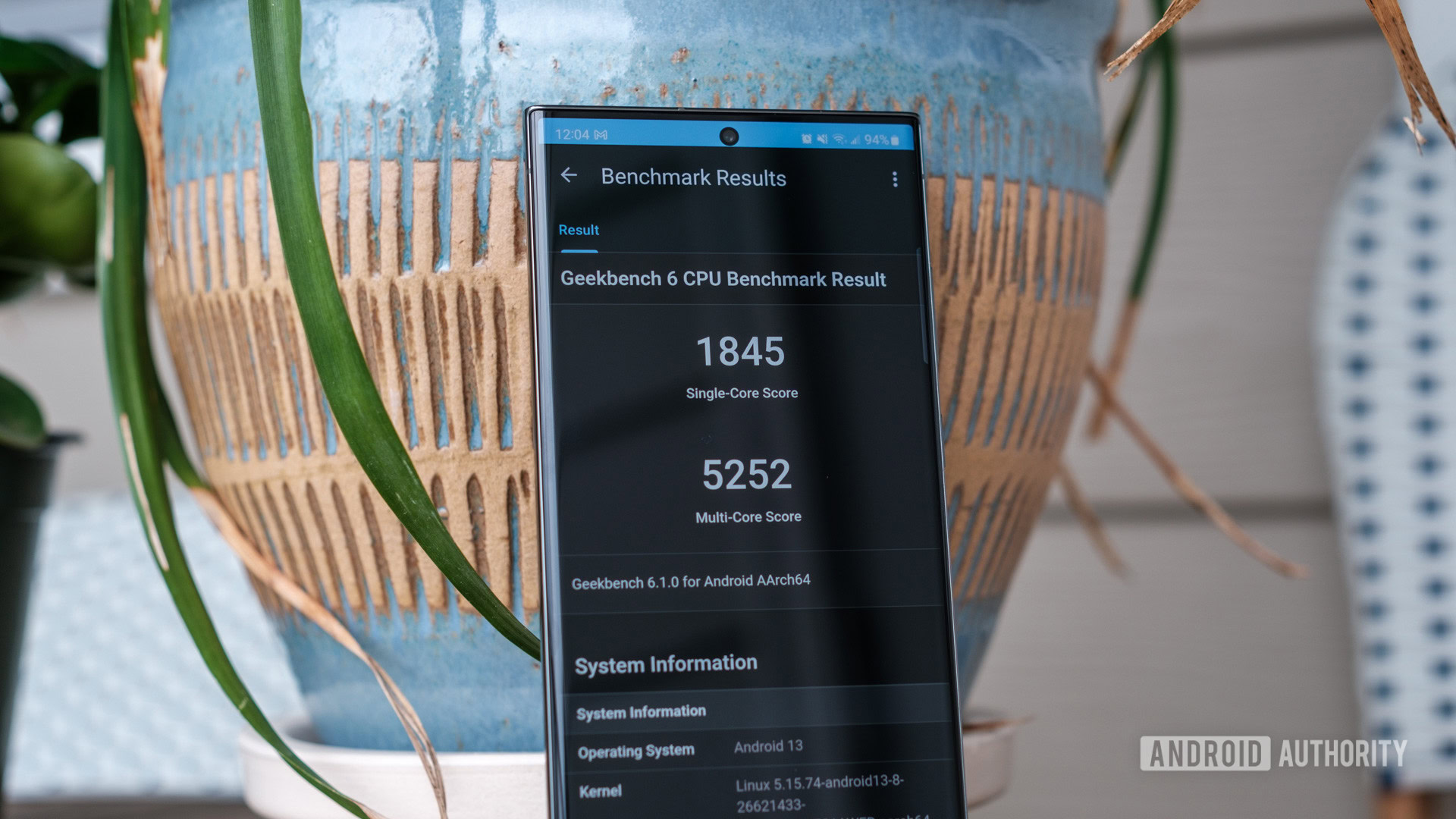
The previous Galaxy S22 Ultra was already a standout performer, but as mentioned above, it had trouble keeping the lights on. Now, the retooled Snapdragon 8 Gen 2 for Galaxy chipset stays cooler under pressure, which allows it to shine a bit brighter in everyday life. Six months after its introduction, the Galaxy S23 Ultra continues to breeze through everything I send its way, covering my mixed usage as detailed above and often asking for more. Yes, extended trips with GPS navigation still give the Galaxy S23 Ultra some fits, but that level of usage is enough to warm up any device and cause it to pump the brakes.
You can pair Samsung’s freshly upgraded processor with up to 12GB of RAM and 1TB of fixed storage, which are plenty for most people. We’ll come back to the base configuration with its limited RAM later on, but it’s nice to see Samsung drop the 128GB option off the bottom of the price sheet. You might find that you can get by on 256GB of storage, but it’s worth considering the 512GB version for the increased RAM.
Samsung also sets the tone for connectivity, offering Wi-Fi 6E support, Bluetooth 5.3, and NFC for wireless payments. The Galaxy S23 Ultra’s stereo speakers are among the best around, still getting loud enough that I don’t need a dedicated Bluetooth speaker while I shower.
Updates
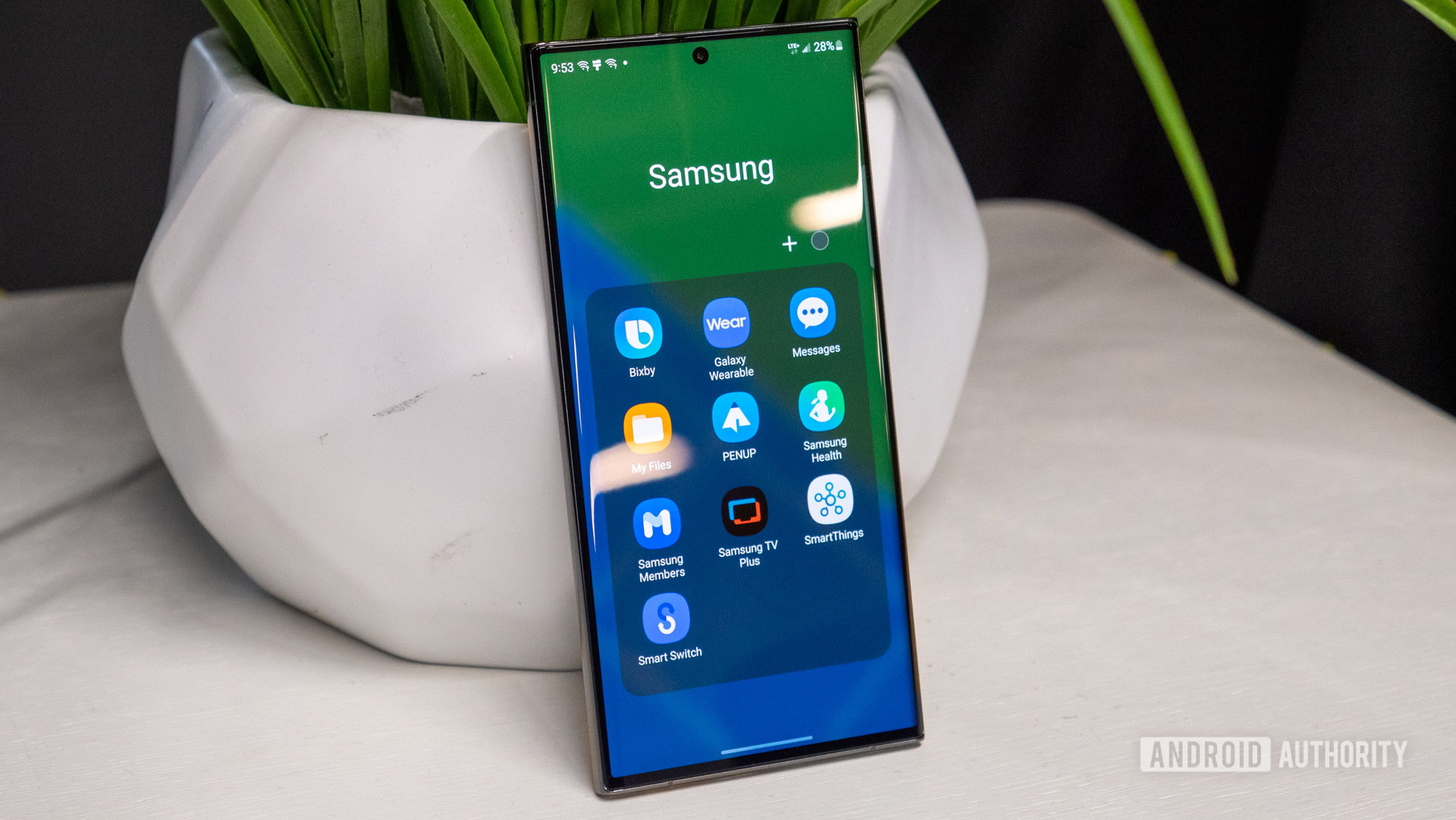
Praising Samsung’s update policy is like letting Babe Ruth play Tee-ball, at least among Android OEMs. Four years of Android version updates and five years of security support are excellent, and Samsung is backing up its commitment — at least early on. We’ve received regular patches so far, with the Galaxy S23 Ultra sitting on the June 1, 2023, Play Store update and the July 1, 2023, security patch.
Samsung hasn’t swept its updates under the umbrella of “bug fixes,” either. An early April update brought specific fixes to the camera app, making it easier to capture images faster. You can now tap the shutter button before the Galaxy S23 Ultra has fully focused and delete images before they’ve finished processing. Samsung tweaked the stabilization when recording in Full HD at 60fps, along with other tweaks.
What’s still not so good about the Samsung Galaxy S23 Ultra
The flaws of a five-star device with an Editor’s Choice badge are few and far between, but they exist. In this case, the Galaxy S23 Ultra’s knocks are things that Samsung can’t fix with a quick patch or a monthly update. We won’t touch on the lack of a headphone jack or included charger, but we do have a pair of nits to pick.
Design
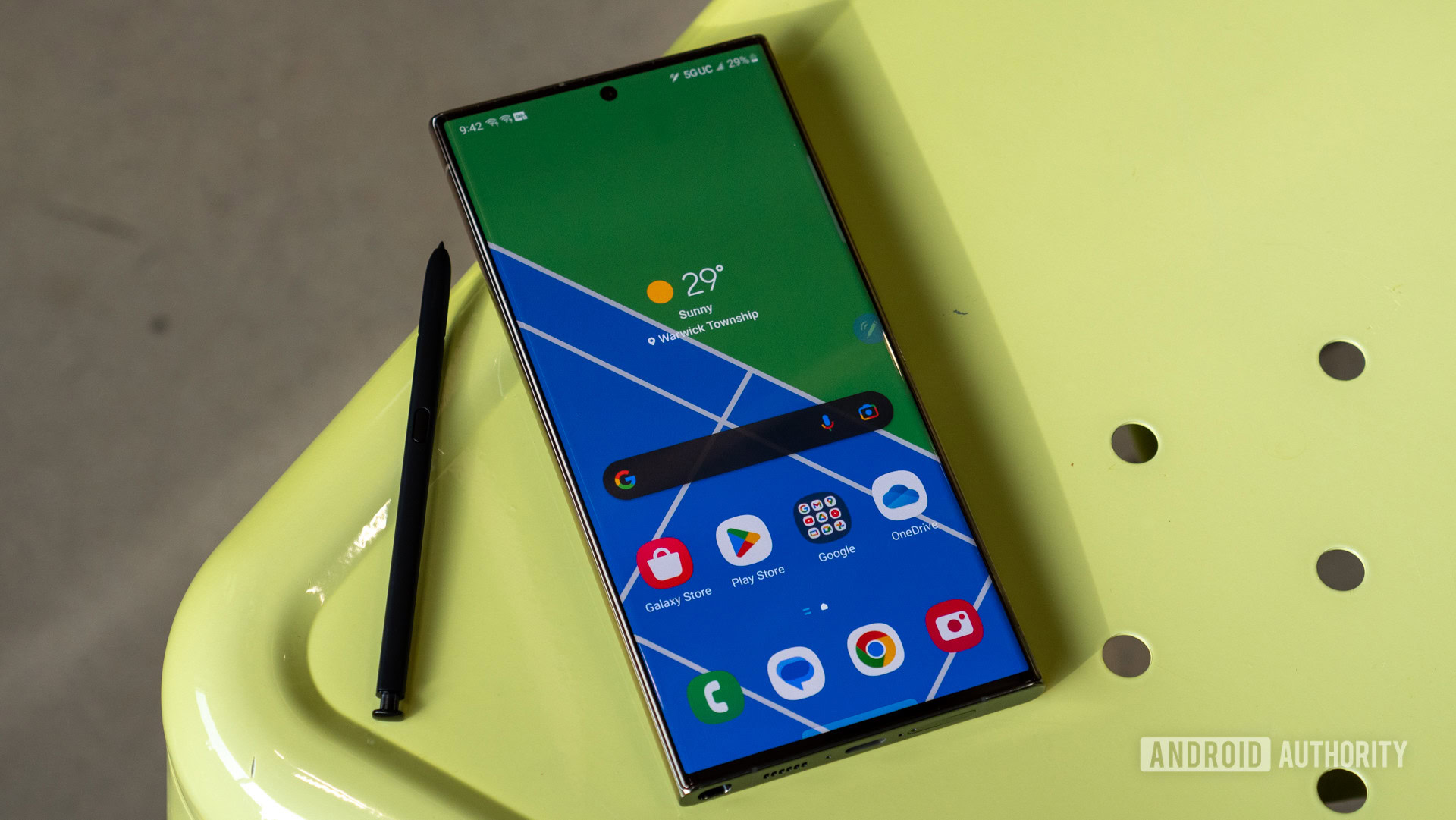
There’s no doubt that the Galaxy S23 Ultra is a premium, well-built phone with top-notch materials. We compared the sex appeal of its predecessor to that of a tank, and it’s even tougher to get excited about another retread of the same design.
The Gorilla Glass Victus 2 and Armor Aluminum slab remains free of any personality, offering only a few new color options to stand out from its predecessor. Its size and shape are still pulled from the Galaxy Note line, while the camera setup (other than the upgraded primary sensor) is identical to the Galaxy S22 Ultra and even the Galaxy S21 Ultra. Granted, Samsung can’t make the S Pen pop out of the side of the Galaxy S23 Ultra, but it would be nice to see a little change from one year to the next.
It hasn't gotten any easier to be excited about a simple glass rectangle.
While I can knock Samsung for copying and pasting its design from previous generations, it did make one good improvement: flatter side rails. The flatter frame makes it easier to keep your paws off the edges of the curved display, cutting down on typos and accidental taps in the process. I’ve still noticed a few unintentional presses, but not nearly as many as I had with the previous generation. Unfortunately, those side rails are still glossy, so they still pick up fingerprints and smudges all day.
My complaints about the Galaxy S23 Ultra’s design come as one who never fell in love with the phablet craze, but you might see it differently. You might be longing for the days of the Galaxy Note 20 Ultra and looking to get an S Pen back in your pocket. If so, the durable, well-polished Galaxy S23 Ultra might be right up your alley.
RAM and storage options
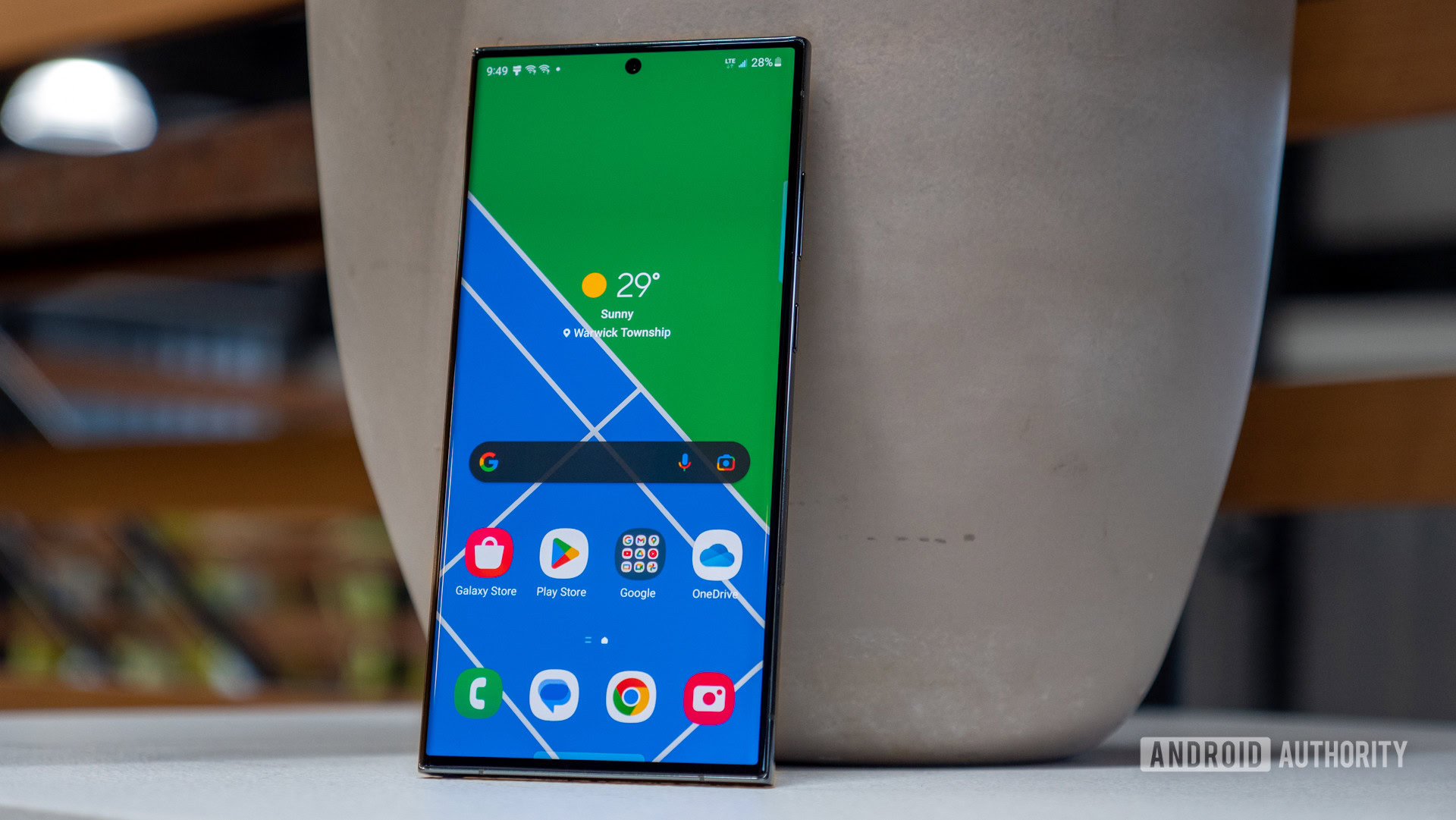
No matter how you feel about the design, it’s easier to agree that the Samsung Galaxy S23 Ultra is slightly limited in its base configuration. While the default 256GB of storage is respectable — and doubles Apple’s standard setting — 8GB of RAM is underwhelming for a phone that starts at $1,199. It doesn’t feel like a stretch to say that premium Android flagships should come with 12GB RAM as their default when you’re spending more than a grand on a new device.
Several of Samsung’s closest rivals would agree, too. Android flagships like the Pixel 7 Pro offer 12GB of RAM across the board, and the OnePlus 11 offers it along with 256GB of storage for several hundred dollars less than the Galaxy S23 Ultra. By comparison, you have to upgrade to 512GB of storage to get 12GB of RAM on the Galaxy S23 Ultra, bringing your total cost to $1,379 in the US.
Even if you consider yourself a power user who needs the extra storage, nearly $1,400 is a lot of money to spend on a phone you’ll only have for a few years.
Samsung Galaxy S23 Ultra revisit verdict: Still worth the money?
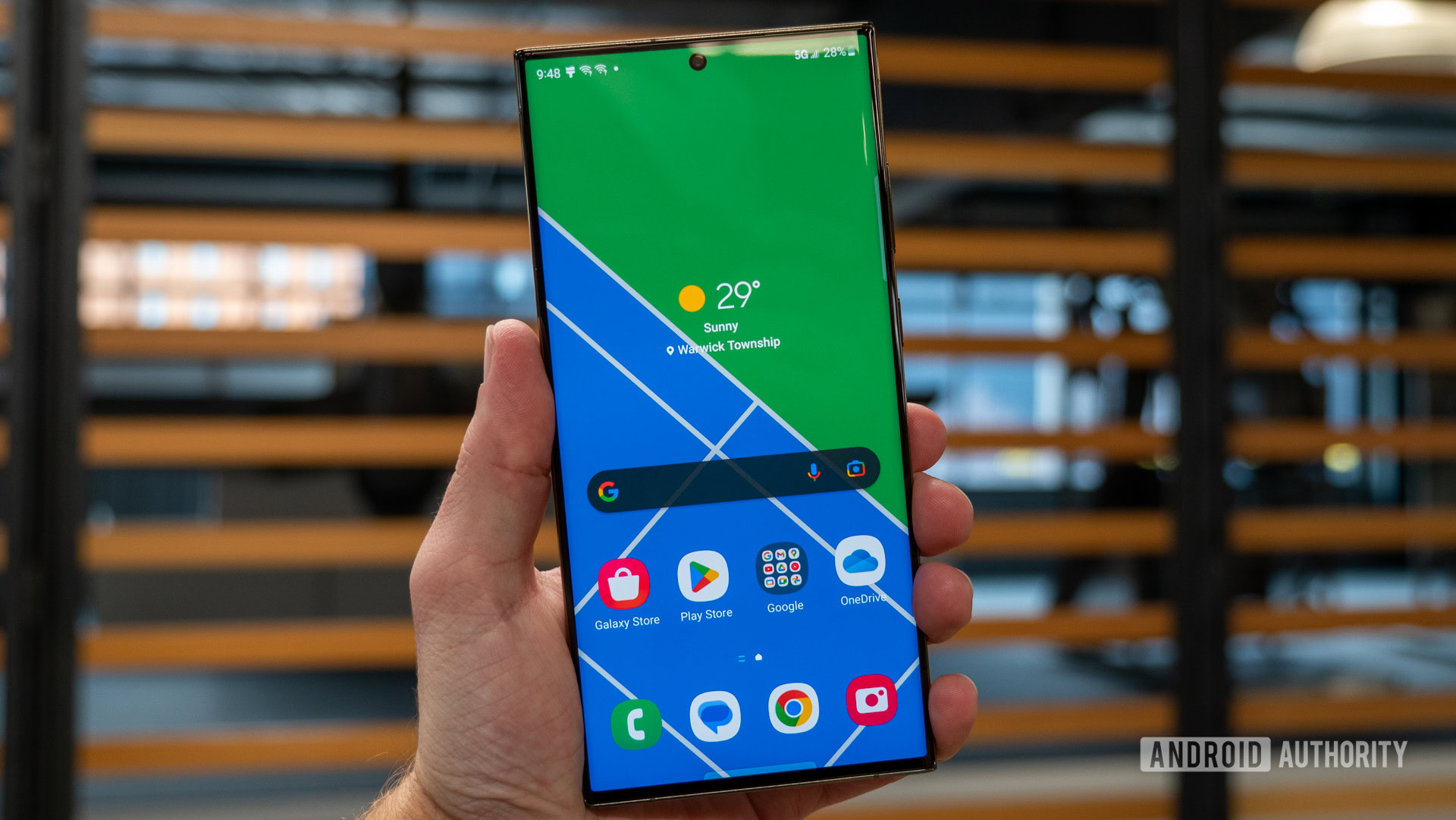
It’s safe to say that the good far outweighs the bad six months after Samsung launched its Galaxy S23 Ultra. The headliner of the Galaxy S23 family stormed into 2023 with a star-studded lineup full of premium specs rather than one-hit wonders. Sure, it would be nice to see a little more base RAM and a refreshed design before long, but it’s hard to argue with what Samsung managed to deliver.
The Galaxy S23 Ultra is an all-out workhorse, easily meeting the performance needs of power users and making strides in the battery department thanks to the swap to Qualcomm’s overclocked Snapdragon 8 Gen 2 for Galaxy. It packs a who’s who of excellent materials, meshing Gorilla Glass Victus 2 with Armor Aluminum and securing a durable IP68 rating. Samsung’s long-term update commitment and flexible cameras also set the standard among Android competition — even if they come at an Ultra-premium price.
Samsung's Galaxy S23 Ultra remains an excellent Android flagship — as long as you're willing to spend the money.
Perhaps the biggest challenge to the Galaxy S23 Ultra’s dominance is that asking price. In 2022, we said that it no longer takes $1,200 to get your hands on an excellent flagship device, and that statement has only solidified over the last year. Google’s Pixel 7 Pro ($589.98 at Amazon) is a perfect example, starting at less than $1,000 and combining Google’s clean Pixel UI with Tensor G2-powered image processing. There’s also the OnePlus 11 ($1296 at Amazon), which is positioned as a callback to the things that made the brand popular in the first place. It has an updated Hasselblad camera and 80W wired charging — even if you have to make do without wireless charging. Even Motorola is getting in on the affordable flagship segment, offering its Edge Plus (2023) ($699 at Amazon) at a great price. While the latest Edge Plus only has 8GB of RAM, it offers 512GB of storage as its default and delivers 68W wired charging without giving up its wireless option.
Is the Samsung Galaxy S23 Ultra still worth buying after six months?
Then, there’s the Apple approach. Both the iPhone 14 Pro ($799.99 at Amazon) and Pro Max ($999 at Amazon) come close to the Galaxy S23 Ultra’s asking price, and they offer the best iOS experience you can get. Apple swapped the longstanding notch for a Dynamic Island, and the Pro models are now the only way to get the latest and greatest (for now) A16 Bionic chipset. While you won’t get as much RAM or as large of a battery on either iPhone, Apple’s unrivaled optimization allows it to squeeze much more out of its hardware.
Ultimately, the Samsung Galaxy S23 Ultra remains one of the best Android smartphones more than half a year after its launch. The main questions you have to ask yourself are whether or not it’s more power than you need in your pocket… and if you want to spend that much money.

